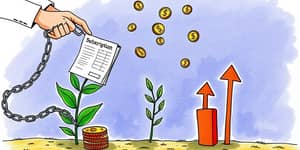
When unexpected financial hardship strikes, the promise of relief through forbearance can feel like a welcoming oasis. It offers a brief pause or reduction in loan payments, shielding borrowers from immediate legal action and preventing foreclosure or default. In the moment, it seems like a straightforward path toward breathing room and reduced stress.
Yet, while forbearance might appear tempting, it carries hidden costs and long-term consequences. Unless every alternative has been explored and found unsuitable, forbearance should be reserved as a last resort tool when all other options have been exhausted. A thoughtful, well-informed decision today can prevent deeper financial strain tomorrow.
Forbearance refers to a temporary postponement or reduction of loan payments granted by lenders to borrowers experiencing financial hardship. Typical forbearance periods range from three to six months, though some programs allow extensions up to 12 or 18 months. During this interval, the lender agrees not to pursue foreclosure or legal remedies, offering a reprieve for individuals struggling to keep up with obligations.
It is important to recognize that any skipped payments under forbearance interest continues to accrue during forbearance. Accrued interest is often capitalized—added to the principal balance—causing higher monthly bills when normal payments resume. Understanding these mechanics is critical before committing to forbearance as a strategy.
Borrowers generally must demonstrate documented financial hardship to qualify for forbearance. Qualifying events often include job loss, illness, injury, natural disaster, or significant loss of income. Lenders may require pay stubs, medical records, or proof of unemployment benefits to verify the situation.
Approval also hinges on factors such as credit and payment history. Those with a strong record of timely payments are more likely to receive favorable forbearance terms. Ultimately, forbearance is a negotiated agreement with terms vary by lender, loan type, and individual circumstances.
Before electing forbearance, borrowers should consider other loss mitigation solutions that may carry fewer long-term costs. Some alternatives often provide relief without triggering immediate interest capitalization or steep repayment increases.
Each option has distinct advantages and drawbacks. Forbearance may seem easiest to obtain, but it often results in a must be repaid with accrued interest burden that can escalate over time. By contrast, a loan modification may reduce monthly payments permanently without stacking additional interest.
Before pursuing forbearance, take these proactive measures to protect your financial future:
Assuming you enter forbearance, planning for repayment is crucial. When the relief period ends, you may face sudden, unmanageable payment shock at the end if you are unprepared. Create a detailed budget that factors in the capitalized interest and any extended loan term.
Consider setting aside a small monthly reserve during forbearance to cushion the transition back to full payments. Investigate whether you can refinance or negotiate a loan modification before the forbearance term expires. Staying proactive helps avoid surprise bills that could derail your recovery.
Maria lost her job in a regional downturn and entered forbearance on her mortgage without exploring alternatives. When her six-month period lapsed, her balance had grown by thousands of dollars. Without a plan, she struggled to make payments and eventually faced another forbearance request, deepening her stress and debt.
Contrast this with James, who first tried a loan modification and deferment on his student loans. Although the process was intensive, he secured lower rates and extended terms that he managed comfortably. He kept detailed records, set aside emergency savings, and avoided the long-term debt accumulation and strain that can follow unnecessary forbearance.
Forbearance can provide vital breathing space in emergencies, but it is not a free pass. Accrued interest and added balances mean borrowers must tread carefully. Always explore alternatives—loan modification, deferment, repayment plans—before choosing forbearance.
By understanding all terms, planning for repayment, and maintaining open communication with lenders, you can safeguard your financial well-being. Remember, forbearance should be a shield of last resort, not a first step. Empower yourself with knowledge and proactive action to navigate hardship without compromising your future stability.
References













